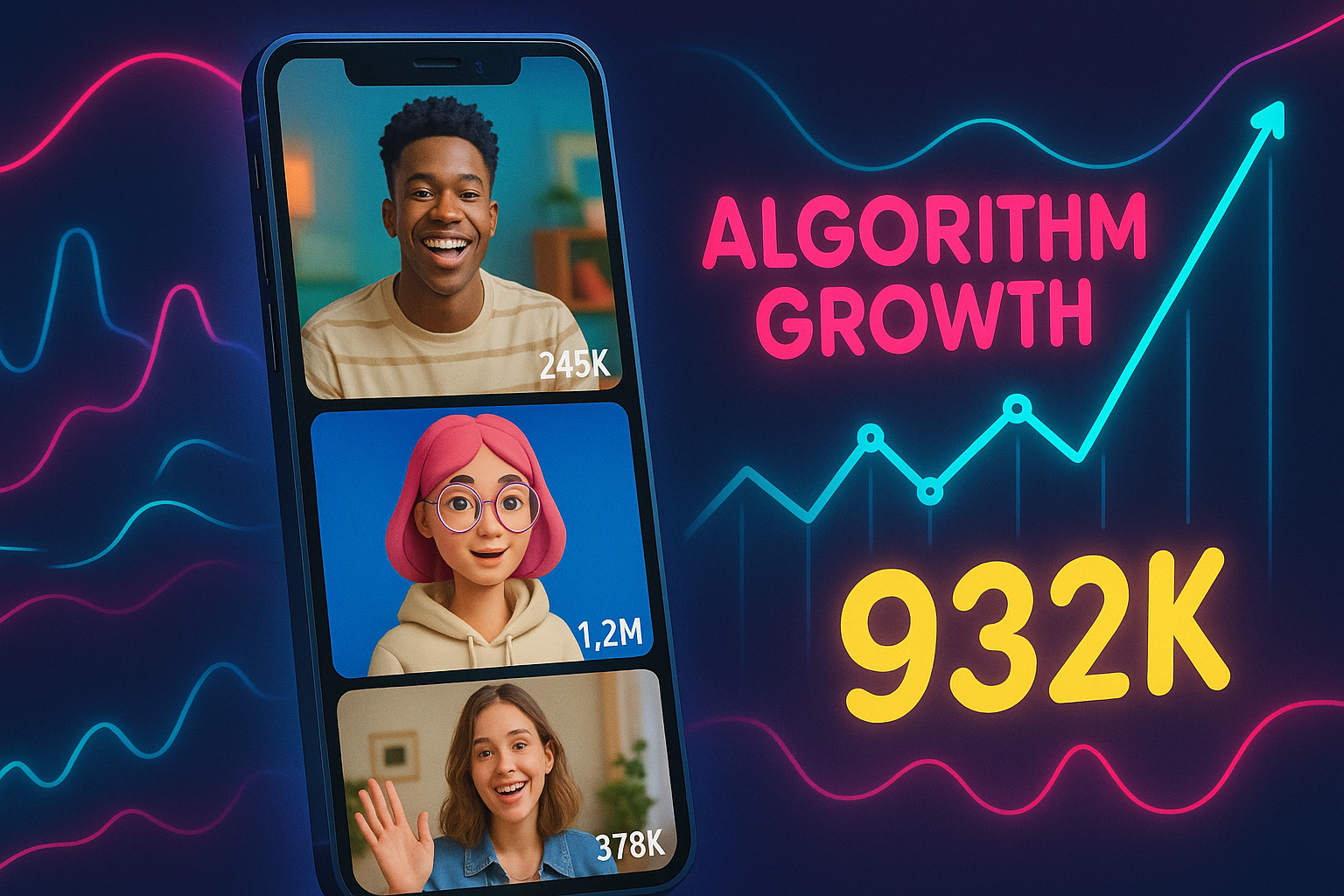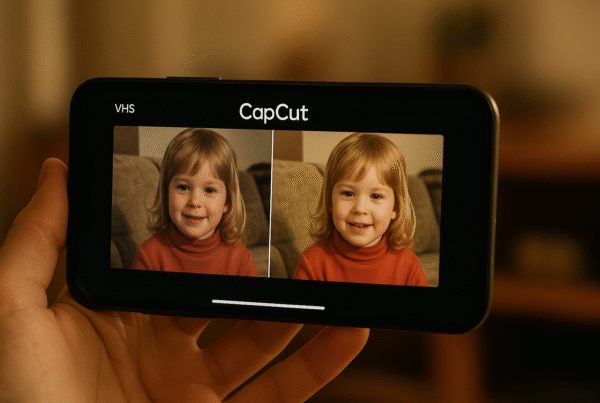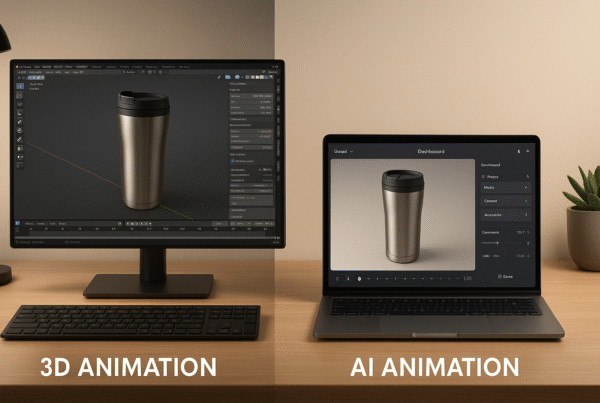Did you know that UGC ads on TikTok campaigns are 22% more effective than brand-created videos, outperforming Facebook ads by 32% and regular ads by 46%? The numbers don’t lie when it comes to user-generated content. TikTok, a staggering 90% of consumers trust UGC, while only 4% trust branded messages.
What makes Tiktok ugc ads so powerful? For starters, they drive a 159% higher engagement rate than non-creator content. Additionally, they generate a click-through rate of 1.5%, surpassing Facebook’s average of 0.9%. It explains why 84% of Gen Z users have made purchases based on what they’ve seen on social platforms. Furthermore, understanding how TikTok ads work in conjunction with the platform’s algorithm is crucial if you want to leverage the power of AI-generated content that appears authentic enough to be prioritized and potentially receive three times more views than traditional ads.
In this guide, you’ll discover how TikTok’s algorithm favors authentic-looking AI UGC and learn technical tips for optimizing your content, from ideal video length to strategic text placement and trending sound incorporation. Whether you’re new to TikTok UGC Marketing or looking to enhance your existing strategy, these algorithm insights will help you create content that resonates with TikTok’s 170+ million viewers per minute.
What is TikTok UGC and Why It Works
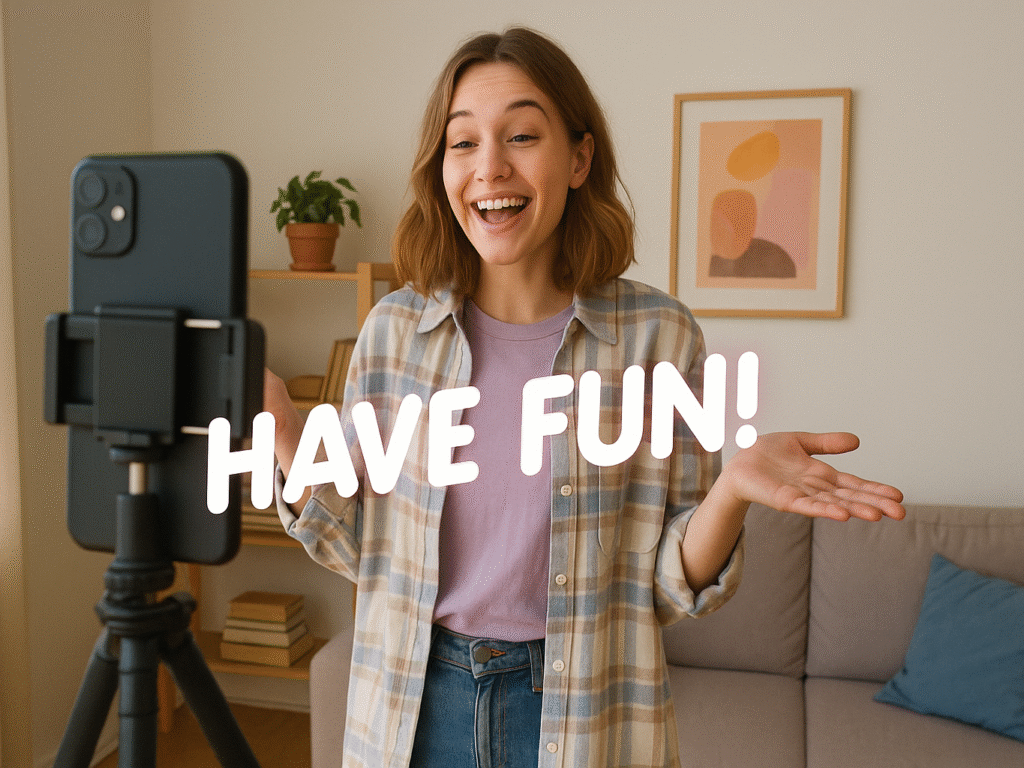
TikTok has redefined what advertising looks like through user-generated content (UGC). Unlike traditional polished ads, TikTok UGC creates a seamless blend between entertainment and promotion, changing how brands connect with their audiences.
1. Understanding user-generated content on TikTok
At its core, TikTok UGC refers to content created by everyday users rather than brands or professional creators. It includes product reviews, unboxing videos, testimonials, creative challenges, and authentic demonstrations showing how products work in real-life settings. For brands looking to leverage TikTok UGC Marketing and this powerful content format, understanding UGC video ads and their marketing potential is crucial for campaign success.
What makes TikTok UGC unique is its raw, unfiltered nature. Rather than following scripts or brand talking points, creators share their genuine reactions and thoughts. This content doesn’t feel like a sales pitch; it feels like a personal recommendation from someone you might know.
Consider this: 15% of TikTok users admit they struggle to distinguish between ads and regular content. It isn’t accidental; it’s because the best UGC seamlessly integrates into the TikTok experience without disrupting it.
UGC Video Ads: Meaning, Marketing Power & How to Use Them: Discover the complete guide to UGC video advertising strategies that convert. Learn proven techniques for creating compelling user-generated content that drives engagement and sales.
2. Why authenticity drives engagement
Authenticity is the currency of TikTok. Today’s users, especially those in Gen Z, can instantly spot inauthenticity. It explains why a striking 90% of people trust UGC, yet only 4% trust branded messages.
- UGC aligns with TikTok’s raw, unfiltered style
- Gen Z values relatability over perfection
- Authentic content increases watch time and shares
The proof is in the numbers: 79% of consumers say that UGC has a highly significant impact on their purchasing decisions. Moreover, 85% of people are not influenced by influencer-marketing content, preferring instead to make purchase decisions based on real user experiences.
What drives this trust? First and foremost, UGC helps potential customers visualize products in their own lives. When consumers see real people enjoying a product, they’re more likely to trust the brand and consider making a purchase. Indeed, around 86% of social media users reported they’re most likely to buy a product after seeing a UGC review.
- Visual storytelling creates emotional connections.
- Real user experiences reduce buyer hesitation
- UGC reviews feel more reliable than polished ads
UGC also sparks conversations. Users ask questions in comments, share videos with friends, or create their own versions of content. This interaction naturally boosts reach and maintains momentum for brands.
3. How TikTok’s algorithm favors UGC
The TikTok algorithm is uniquely designed to prioritize content based on engagement rather than follower count. It means that well-crafted UGC has the potential to go viral, regardless of the creator’s follower size.
- Viral potential isn’t limited to influencers.
- Engagement quality matters more than follower metrics
- Even new creators can reach massive audiences
Notably, TikTok’s system is built to promote relevant, high-quality content. When users engage with UGC through likes, comments, and shares, the algorithm interprets this as valuable content worth amplifying to similar audiences.
The algorithm also prioritizes “fresh and innovative content”, which is precisely what UGC delivers. Since UGC naturally generates higher engagement rates than polished brand content, it tends to perform better in TikTok’s content-first approach.
- UGC taps into trends quickly and authentically
- Real-time content adapts well to TikTok’s fast pace
- Engagement loops boost discoverability through the For You Page
As a result, brands earn more engagement when they repost UGC compared to in-house creatives that look super polished. Additionally, TikTok creators can earn massive reach regardless of their follower counts.
The ripple effect is powerful: as users create and share content, it reaches their followers, who may, in turn, create content in response. This continuous cycle further amplifies your brand’s reach by feeding the algorithm exactly what it craves: authentic engagement.
The Rise of AI-Generated UGC on TikTok
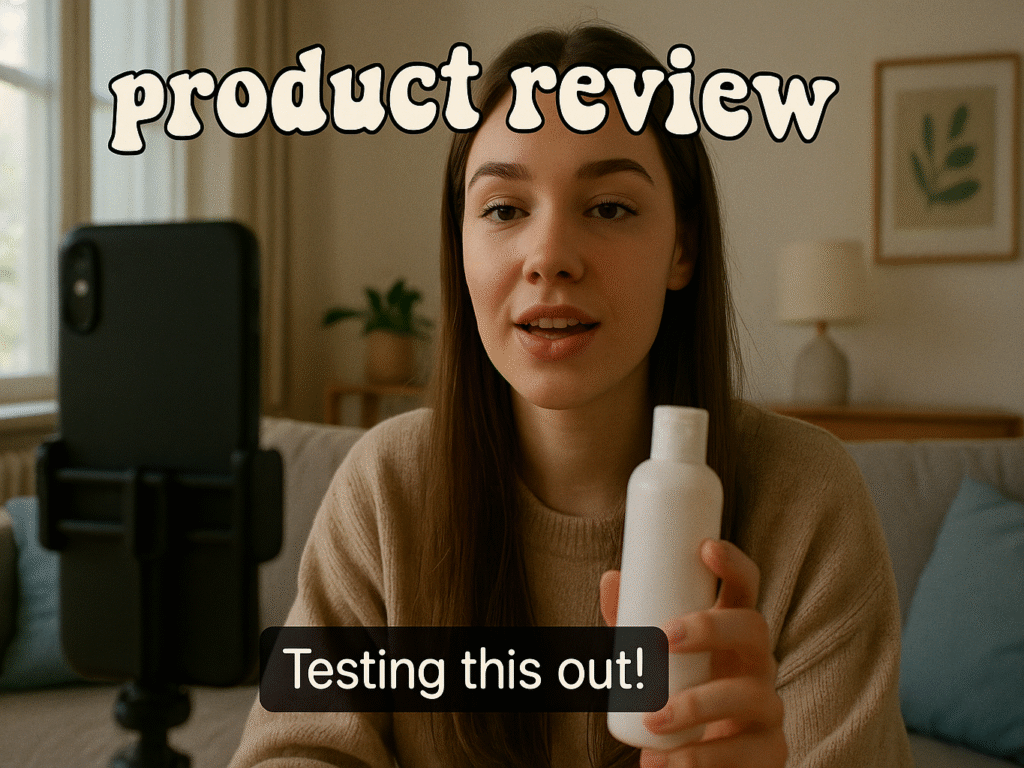
As TikTok continues to evolve, a new frontier has emerged in the UGC space: AI-generated content that mimics the authentic feel of real user videos but with the efficiency of automated production.
1. What is an AI-generated UGC?
AI UGC refers to content created using artificial intelligence that’s designed to appear as if everyday TikTok users produced it. Unlike traditional user-generated content, AI UGC leverages technology to create videos, images, and text that mimic the casual, authentic style that performs well on the platform.
These AI-powered videos often feature realistic-looking avatars or modified real footage that maintains the “homemade” aesthetic that TikTok users respond to. The technology can generate everything from product reviews and demonstrations to testimonials, all without requiring actual creators.
TikTok takes AI-generated content seriously, requiring creators to disclose when content has been “completely generated or significantly edited by AI.” This transparency is maintained through creator-applied labels or automatic detection by TikTok’s systems. The platform may automatically apply an “AI-generated” label to content created with TikTok’s AI effects or content uploaded with Content Credentials attached.
2. Why AI content is gaining traction
The rapid adoption of AI UGC comes down to several compelling advantages:
- Cost-effectiveness: AI UGC significantly reduces production costs by automating content creation processes, eliminating the need for expensive production teams or equipment.
- Speed and scale: Brands can produce content quickly and consistently without hiring additional staff, enabling them to respond to trends in real-time.
- Personalization capabilities: AI tools analyze audience preferences to tailor content specifically to target demographics.
- Testing efficiency: Marketers can test higher volumes of ads in a fraction of the time it would take with traditional UGC creators.
Perhaps most importantly, AI-assisted content is proving its worth through results. A study by Buffer analyzed 1.2 million social media posts and found engagement rates increased from 4.89% for non-AI-assisted posts to 6.13% for AI-assisted content. Brands seeking to implement these strategies can explore comprehensive AI UGC video solutions that streamline the entire content creation process.
TikTok’s own Symphony Creative Studio combines AI with creativity, providing advertisers with tools to design, test, and refine ad content directly within TikTok Ads Manager. This platform offers over 500 ready-to-use avatars, translation capabilities, and adjustable edits for sound and text, enabling brands to create impactful content within minutes.
3. Examples of AI UGC that went viral
The success of AI-generated content on TikTok spans a diverse range of niches. Creators like Holliday have gained large audiences by visualizing phobias through AI, inviting user interaction via comment prompts. Similarly, Musto (Gaxalactic) built a following of over 73,000 by sharing AI-generated visuals of gods from various cultures, turning creativity and technology into viral content.
- Audience engagement increases with comment-based prompts.
- Niche AI content builds strong, targeted communities
- Interactive storytelling drives repeat views and shares
AI art is especially popular on TikTok. The platform has been crucial to its rise, helping creators visualize trending ideas rapidly. Since TikTok favors new and frequent content, AI-generated visuals, which can be produced quickly, align perfectly with the platform’s demand for fast-paced, trend-relevant material.
According to Social Media Examiner, 60% of companies now use AI to improve content engagement and streamline production. Business Insider reports that 20% of brands plan to incorporate AI-generated content into their marketing efforts next year, reflecting a broader shift in strategy across various industries.
- AI boosts both speed and scalability in campaigns
- Brands can maintain a “human feel” while automating content
- Aligns with TikTok’s algorithm, which focuses on relevance and authenticity
The rise of AI-generated UGC marks a new era in content creation. Brands can now blend automation with authenticity, delivering relatable visuals that thrive in TikTok’s algorithm. This TikTok UGC Marketing hybrid approach enables brands to maintain consistency, creativity, and engagement without compromising quality or trust.
How TikTok’s Algorithm Prioritizes AI UGC
The TikTok algorithm works like a sophisticated matchmaker between content and viewers, with recent data showing it has become remarkably adept at prioritizing AI-generated UGC that mimics authentic creator content. Understanding how tiktok ugc algorithm AI works gives advertisers a decisive advantage.
1. The role of watch time and engagement
TikTok’s algorithm fundamentally operates on engagement metrics, with watch time being the most crucial factor. When viewers watch ugc ads on TikTok to completion, the algorithm interprets this as high-quality content worth promoting further.
The tiktok ugc algorithm AI assigns different weights to various engagement signals:
- Watch time carries the highest value (especially completion rate)
- Comments rank second in importance
- Shares signal strong content resonance
- Likes carry the least weight, but still matter
Interestingly, TikTok’s algorithm has evolved to value “meaningful engagement” over simple vanity metrics. It explains why AI-generated UGC that maintains viewer attention receives preferential treatment in the distribution system.
2. How TikTok detects ‘authentic-looking’ content
TikTok’s algorithm has become increasingly sophisticated at identifying content that appears authentic, even when it is AI-assisted. The platform analyzes numerous signals that contribute to the “authentic feel” of Tiktok ugc ads:
First, the algorithm examines video production quality, looking not for professional polish but for the characteristic imperfections of user-generated content. Videos shot in natural lighting with minimal editing often perform better than those produced in a studio.
Second, natural delivery matters enormously. Content with conversational pacing, genuine reactions, and authentic emotion triggers positive algorithm signals. It is precisely where AI UGC excels; it can be engineered to include these authentic-seeming characteristics consistently.
Third, contextual relevance plays a significant role. The algorithm assesses how well content aligns with current trends, sounds, and hashtags, ensuring it does not appear forced or artificial. AI-generated UGC can be rapidly tailored to match these trending elements.
3. Why AI UGC gets 3X more views
The performance gap between AI-optimized UGC and traditional content is rooted in key technical advantages aligned with how TikTok’s algorithm works. AI-generated UGC achieves higher completion rates because it’s crafted to retain attention. The longer viewers stay, the more the algorithm boosts visibility, driving viral potential with greater consistency.
- High completion rates trigger algorithmic boosts.
- Structured storytelling keeps viewers watching
- AI-crafted content aligns with TikTok’s timing sweet spots
AI UGC is also incredibly agile. TikTok UGC Marketing allows marketers to rapidly test dozens of video variations, isolate high-performing elements, and optimize future content accordingly. This fast feedback loop feeds the TikTok UGC algorithm, which is exactly what AI loves: performance-driven content that adapts quickly to user behavior and emerging trends.
Most importantly, AI UGC strikes a balance between authenticity and precision. While traditional UGC may suffer from poor lighting, off-message delivery, or distracting visuals, AI content avoids those pitfalls. It preserves the raw, relatable look users trust, without algorithm-triggering flaws that lower content reach.
- Avoids common algorithm penalties (bad lighting, unclear audio)
- Feels human but performs like premium content
- Delivers scalable authenticity across all campaigns
These combined strengths explain why AI-generated UGC continues to outperform both branded content and unoptimized creator videos across TikTok’s evolving ecosystem.
Technical Tips to Optimize AI UGC for TikTok Ads
To maximize your ugc ads TikTok performance, you need to understand the technical nuances that influence how viewers engage with your content. Let’s dive into the specific optimization techniques that can triple your views.
1. Ideal video length for maximum retention
Finding the perfect duration for your ugc ads on TikTok is crucial for engagement. Although TikTok allows In-Feed Video ads to range from 5 to 60 seconds, data shows that 21-34 seconds is the ideal length for In-Feed advertising. Nevertheless, many UGC experts have found that shorter videos between 9 and 15 seconds often deliver optimal performance for standard in-feed ads.
For branded content specifically, keeping videos under 30 seconds drives stronger results, whereas creator content and Spark ads can maintain attention for 15-60 seconds. This balance ensures your message is delivered without losing viewer interest.
2. Best practices for text placement
When adding text to your UGC TikTok ads, proper placement has a significant impact on performance. First, ensure text is easily readable with sufficient contrast against your video background. Adding subtle outlines or shadows can help text stand out against busy backgrounds.
Text should appear in areas that don’t obstruct the main action in your video. For optimal results:
- Use native TikTok fonts rather than custom typography
- Keep messages concise and to the point
- Leave enough whitespace around text for visual breathing room
- Break longer messages into sequential phrases
3. Using trending sounds and effects
Audio is essential to the TikTok experience, with 88% of users stating that sound is crucial to their enjoyment. Users are eight times more likely to remember your brand for its unique sounds than for other visual elements.
To find effective sounds, explore TikTok’s Commercial Music Library for royalty-free tracks. Alternatively, browse the “For You” page to identify currently trending audio. Even though trending sounds evolve quickly, incorporating them properly gives your AI UGC an authentic feel that resonates with the platform’s algorithm.
4. Creating strong hooks in the first 3 seconds
The opening moments of your video are critical; 63% of videos with the highest click-through rates hook their audience within the first 3 seconds. Your AI UGC must grab attention instantly before viewers swipe away.
Effective hook strategies include:
- Making surprising statements that challenge expectations
- Using “stop scrolling” callouts to your target audience
- Showing unusual or visually intriguing elements
- Posing relevant questions that spark curiosity
5. Avoiding over-polished visuals
Counterintuitively, user-generated content on TikTok performs better when it looks authentic rather than professionally produced. Savannah Sanchez, a TikTok Creative Expert, confirms that ads “should look like they’re filmed on an iPhone and edited in CapCut with native TikTok text treatments”.
On TikTok, content creation doesn’t require a big production budget; a mobile phone with decent camera quality is sufficient. Although videos should maintain a resolution of at least 720p, they should never appear overly produced or studio-quality, as this undermines the authentic feel that drives TikTok UGC algorithm AI engagement.
How to Build and Scale a TikTok UGC Ads Strategy
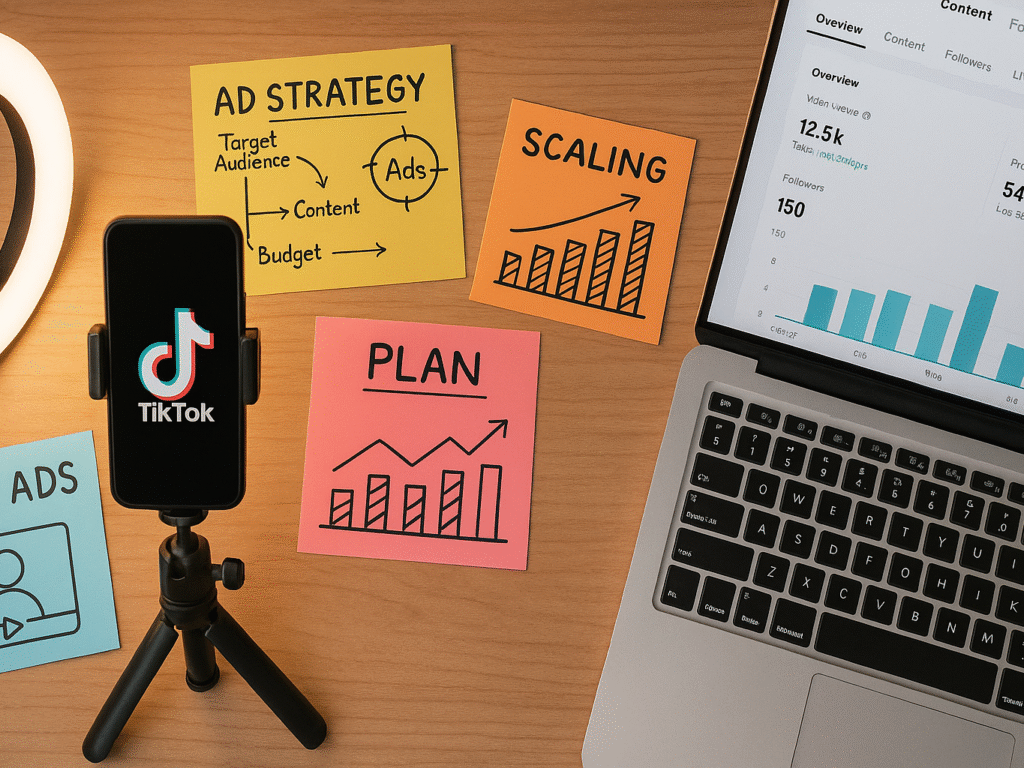
Building a successful framework for ugc ads on TikTok requires more than just creating content; it demands a systematic approach to finding tools, testing variations, and analyzing results. Here’s how to develop a TikTok UGC strategy that scales effectively.
1. Finding the right AI tools and creators
Initially, select AI platforms that generate authentic-looking content at scale. Tools like Creatify AI offer 220+ lifelike avatars in 29 languages and 80+ voices, enabling you to create UGC-style ads from just a product link. Other effective options include Tagshop.ai, Arcades, and MakeUGC. For brands requiring professional assistance, specialized UGC ad services can handle the entire campaign management process while maintaining authenticity and performance standards.
Easy Guide To Making UGC Video Ads With AI: From Start To Finish: Master AI-powered UGC creation with our step-by-step tutorial. Enhance your content strategy with cutting-edge tools that enable the creation of authentic-looking ads at scale.
2. A/B testing different content styles
TikTok’s split testing feature allows you to test different versions of your ads with a 90% confidence rate. For optimal results:
- Test only one variable at a time (targeting, creative, or bidding)
- Ensure sufficient budget (minimum $10 daily per ad group) for statistical significance
- Run tests for at least 7 days or until collecting 50 conversions
- Try different hooks for the first few seconds; one typically performs significantly better
Consequently, A/B testing eliminates guesswork and allows you to scale high-performing content based on data rather than hunches.
UGC Ads Service That Converts: Boost Your brand with Real Content: Get professional UGC ad services that deliver real results. Our expert team creates authentic content that resonates with your audience and maximizes your advertising ROI.
3. Tracking performance metrics like CTR and watch time
Key metrics to monitor include:
- Watch time and completion rate: The strongest indicators of video quality
- Click-through rate (CTR): Measures how compelling your hook is
- Conversion rate: Shows how well your landing page performs
- Cost per click (CPC): Helps measure ad efficiency
Marketers who use measurable action insights can improve conversion rates by up to 82%.
4. Repurposing top-performing UGC across channels
Coupled with creating new content, repurpose your winners across platforms. When repurposing UGC, make slight edits to match each platform’s requirements; what works on TikTok may need adjustments for Instagram. This approach stretches your content budget primarily by:
- Adapting high-performing TikTok content for email campaigns
- Featuring UGC on product pages for a potential 91% lift in conversions
- Converting successful organic UGC into paid ads through TikTok Spark Ads
For comprehensive guidance on maximizing UGC video ads across multiple platforms, consider implementing a systematic approach to content repurposing.
Common Mistakes to Avoid with AI UGC on TikTok
Understanding pitfalls helps marketers avoid costly errors that damage campaign performance. These mistakes often stem from misunderstanding TikTok’s unique culture and algorithm preferences.
1. Over-Automation Red Flags
Many brands fall into the trap of creating AI content that feels too robotic or disconnected from human experience. TikTok users quickly identify content that lacks genuine emotion or relatability, leading to poor engagement rates.
AI-generated voices that sound monotone or unnatural immediately signal artificial content to viewers. Similarly, perfectly scripted scenarios without spontaneous moments can create an uncanny valley effect, causing users to turn away.
2. Ignoring Platform-Specific Nuances
TikTok’s culture differs significantly from other social platforms, requiring content that matches its fast-paced, trend-driven environment. Brands often repurpose content designed for Instagram or Facebook without adapting to TikTok’s unique aesthetic and pacing preferences.
- Using overly polished visuals that don’t match TikTok’s raw aesthetic
- Failing to incorporate trending hashtags and sounds at the right moment
- Creating content that feels like traditional advertising rather than native TikTok videos
Understanding these nuances prevents content from appearing out of place. TikTok users expect authentic, slightly imperfect content that feels like it belongs in their feed naturally.
3. Disclosure and Transparency Issues
Proper AI content labeling protects brands from potential backlash while maintaining user trust and confidence. TikTok requires clear disclosure when AI generates content, and failing to comply can result in account penalties.
- Forgetting to add “AI-generated” labels to obviously artificial content
- Trying to pass AI avatars as real people without proper disclosure
- Misunderstanding TikTok’s evolving AI labeling requirements
Transparency builds long-term trust with audiences who appreciate honesty about content creation methods. Brands that communicate their use of AI often see better engagement than those attempting to deceive.
Legal and Ethical Considerations
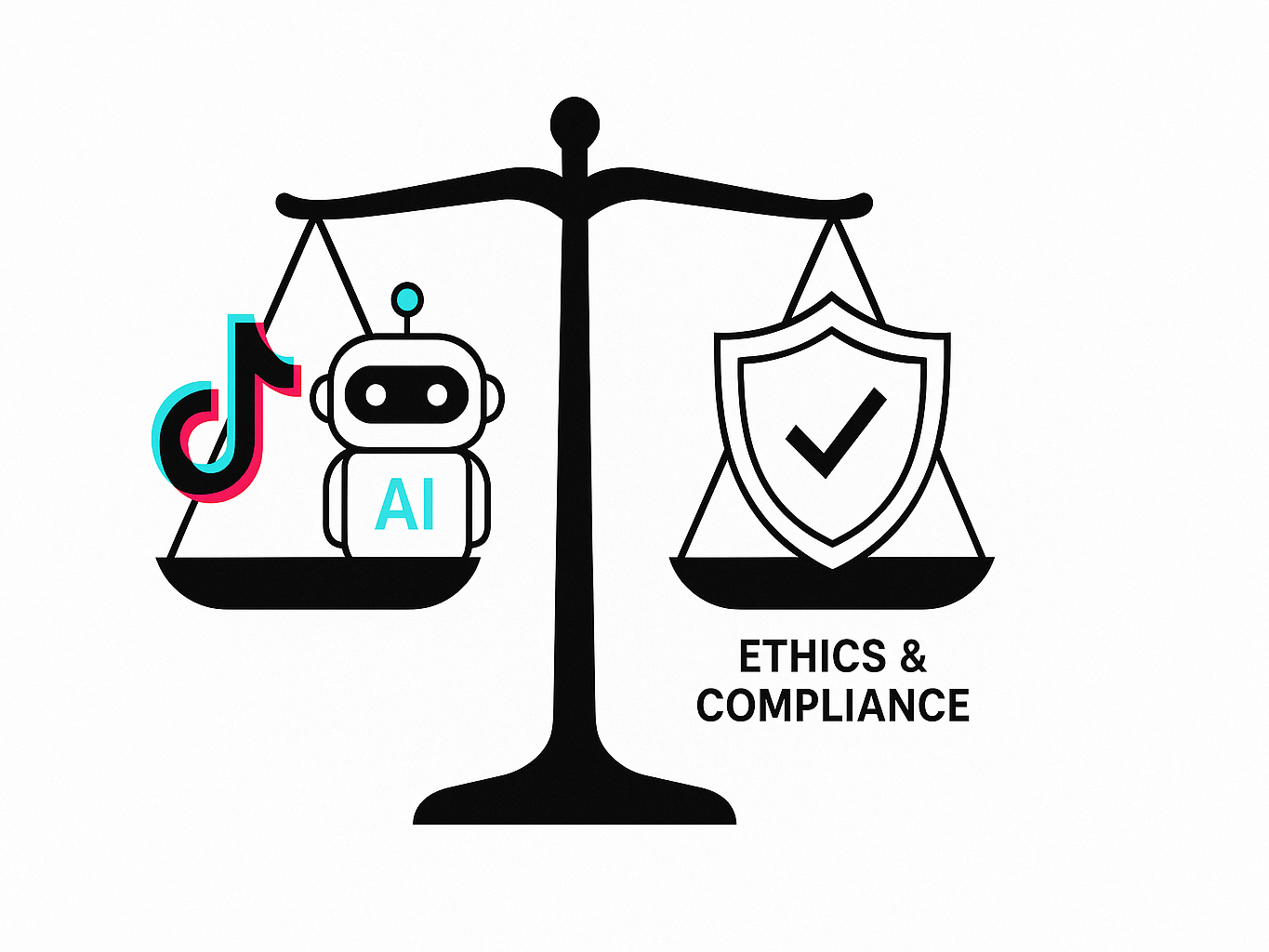
Navigating AI content creation requires understanding compliance requirements and ethical boundaries that protect both brands and consumers.
1. TikTok’s AI Content Policies
TikTok continuously updates its policies regarding AI-generated content, requiring creators to stay informed about disclosure requirements. The platform’s systems can automatically detect certain types of AI-generated content, making compliance essential for maintaining a good account standing.
Recent policy changes emphasize transparency in AI usage while still allowing creative freedom. Brands must strike a balance between innovation and responsibility, ensuring their AI content meets platform standards without compromising its effectiveness or impact.
Understanding these policies prevents violations that could result in content removal or account restrictions. Staying current with TikTok’s guidelines ensures sustainable long-term success with AI-generated campaigns.
2. brand Safety and Authenticity Balance
Creating AI content that maintains brand integrity while appearing authentic requires careful consideration of ethical boundaries. Brands must avoid creating misleading content that could damage consumer trust or misrepresent their products.
- Ensuring AI-generated testimonials accurately reflect real user experiences
- Avoiding deepfake technology that could mislead consumers about product endorsements
- Maintaining an honest representation of product benefits and limitations
Balancing authenticity with brand messaging protects companies from potential legal issues while building genuine connections with audiences. Ethical AI usage demonstrates respect for consumers and platform community standards.
Brands that prioritize transparency and authenticity in their AI content often achieve better long-term results than those focusing solely on algorithmic performance. This approach builds sustainable relationships with TikTok’s community.
Budget Planning and ROI Optimization
Effective budget allocation maximizes returns from AI UGC campaigns while maintaining cost efficiency across different content types and testing phases.
1. Cost Comparison: AI vs Traditional UGC
AI-generated content typically costs 60-80% less than traditional creator partnerships while offering greater scalability and consistency. However, initial setup costs for AI tools and learning curves must be factored into budget planning.
Traditional UGC creators charge $100-1000+ per video, depending on follower count and engagement rates. AI tools like Creatify or Arcades offer monthly subscriptions starting at $39-99, enabling unlimited content creation once mastered.
Long-term cost benefits become apparent when scaling campaigns across multiple markets or languages. AI tools eliminate ongoing creator fees while providing consistent quality and control over messaging.
2. ROI Metrics and Benchmarking
Measuring AI UGC success requires tracking specific metrics that indicate both immediate performance and long-term brand impact. Standard benchmarks help identify whether campaigns achieve industry-average results or exceed expectations.
- Average TikTok ad CTR ranges from 1-3%, with top-performing AI UGC achieving 4-6%
- Conversion rates for UGC ads on TikTok typically range from 2 to 5% across industries.
- Cost per acquisition should decrease by 20-40% when using optimized AI content.
Establishing baseline metrics before launching AI campaigns enables accurate performance comparison and optimization opportunities. Regular analysis reveals which AI content styles generate the highest returns on investment.
Successful brands typically see 150-300% ROI improvement within 3-6 months of implementing systematic AI UGC strategies. These results compound as campaigns become more sophisticated and targeted.
3. Scaling Strategies for Growing Budgets
As ugc ads TikTok campaigns prove successful, scaling strategies help maintain efficiency while expanding reach and impact. Systematic scaling prevents common pitfalls that occur when ad spend is rapidly increased.
Gradual budget increases enable testing new audience segments without incurring significant losses on unproven targeting. Start with 20-30% weekly budget increases while closely monitoring performance metrics.
Advanced scaling involves expanding into new markets, languages, or product categories by utilizing proven AI UGC templates. This approach leverages successful content formats while adapting messaging for different audiences and contexts.
Final Thoughts
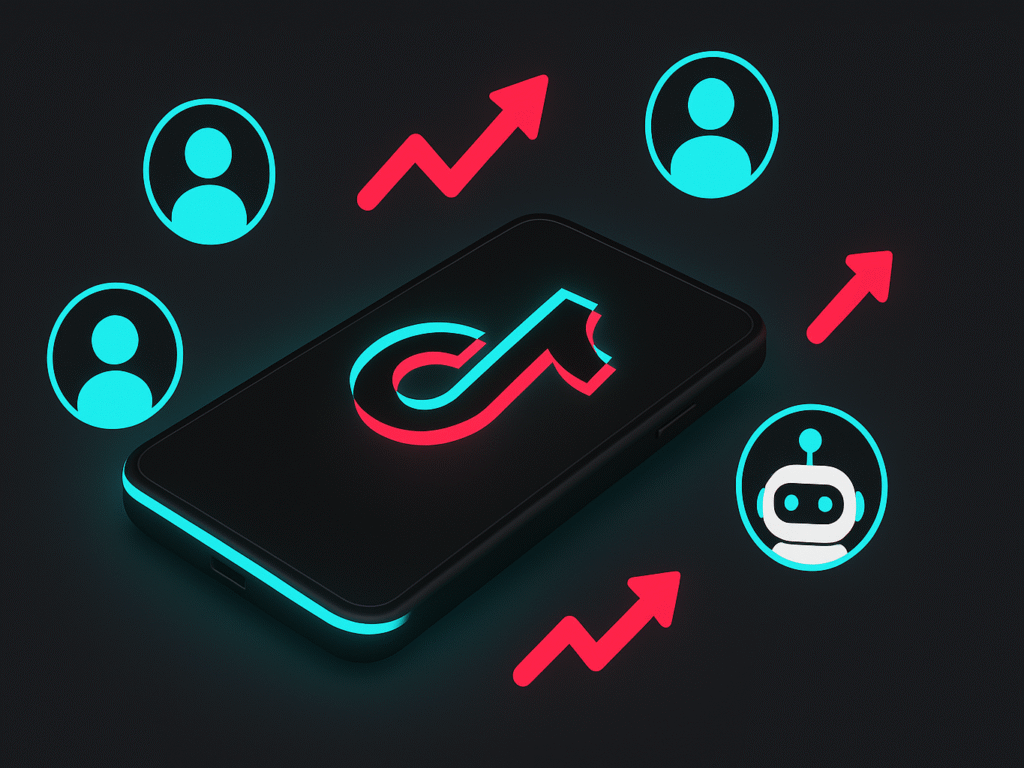
TikTok has revolutionized advertising by favoring content that feels real and unpolished. Ugc adson TikTok uses an AI bridge to enhance authenticity and scalability, often tripling views compared to traditional ads. This performance edge stems from AI’s ability to mimic human content while removing flaws, aligning perfectly with TikTok’s algorithmic preferences for relatable and engaging videos.
With 90% of consumers trusting UGC and only 4% trusting branded content, marketers must adapt. TikTok UGC Marketing success lies in creating videos that feel natural, not overly produced. Prioritize 9–15 second formats, use trending audio, and apply on-screen text strategically. Mimicking the casual vibe of real TikToks is crucial for achieving higher engagement.
To win with AI UGC, start strong and capture viewers’ attention within the first three seconds. Focus on high watch time, encourage interaction, and run variation tests to discover top performers. Whether using AI tools or human creators, balancing authenticity and optimization will be the future-proof strategy for thriving in TikTok’s ever-evolving content ecosystem.
FAQs ugc ads tiktok
Q1. Why are TikTok UGC ads more effective than traditional ads?
TikTok UGC ads generate 159% more engagement and a 1.5% click-through rate by delivering relatable, authentic content. Unlike polished ads, UGC feels natural, which helps brands connect emotionally and perform better with TikTok’s engagement-driven algorithm.
Q2. Why do consumers trust UGC more than branded messages?
UGC feels like honest peer recommendations, which is why 90% of consumers trust it, compared to just 4% who trust branded content. This trust stems from UGC’s realness and relatability, which make it more persuasive and effective in driving decisions.
Q3. How does TikTok’s algorithm prioritize UGC content?
TikTok’s algorithm boosts content based on engagement, watch time, likes, shares, and comments. UGC naturally performs well because it feels genuine and encourages interactions. It leads to a broader reach, as the algorithm favors videos that spark meaningful engagement among viewers.
Q4. What are the benefits of using AI-generated UGC on TikTok?
AI-generated UGC offers scalability, consistency, and cost-efficiency. Brands can quickly create variations tailored to audience behavior, avoid common production flaws, and maintain authenticity, resulting in higher engagement, improved performance, and better alignment with TikTok’s content-first, algorithm-driven platform.
